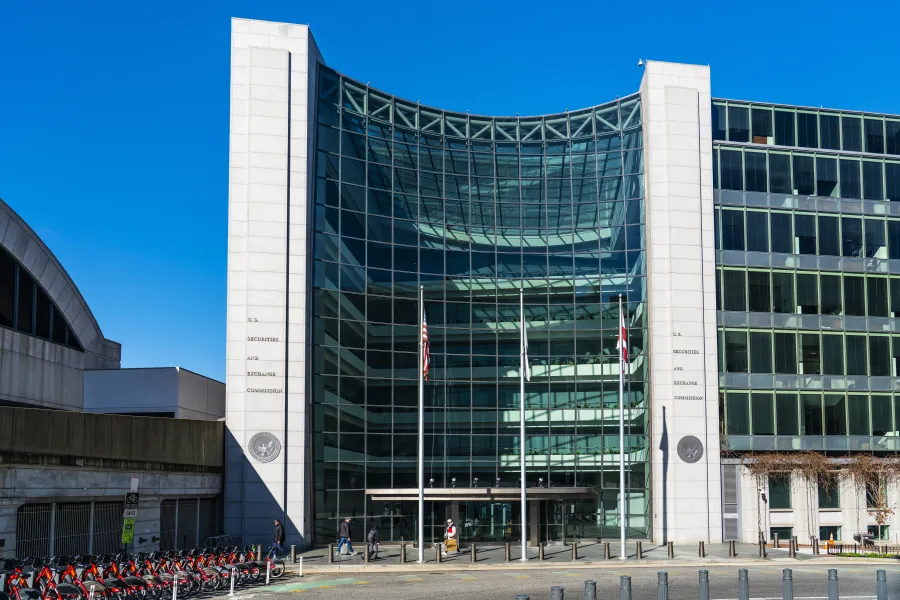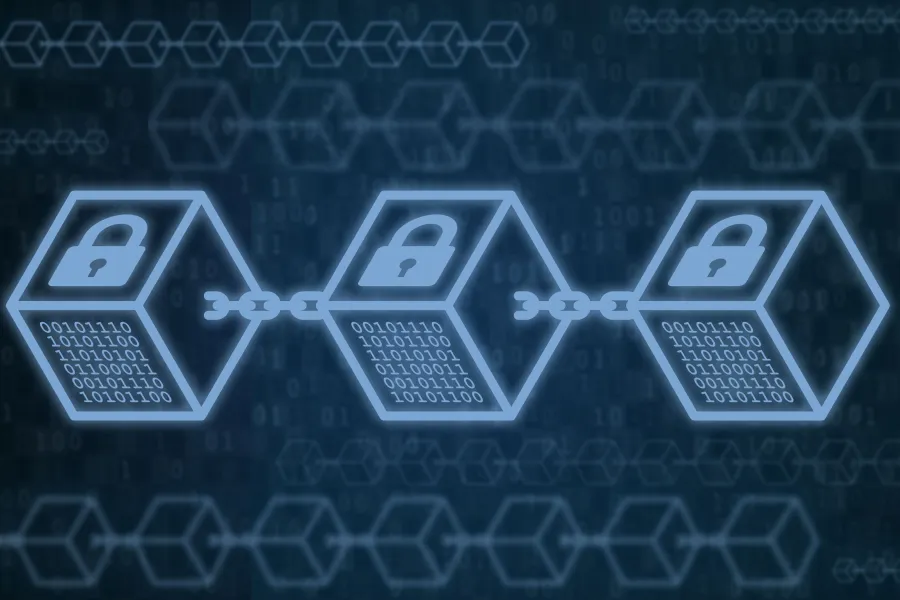Crypto contagion goes on – for how long?
This week, our blockchain experts assesed the following topics:
- Crypto contagion goes on – for how long?
- How to truly qualify as DeFi
- Regulation and crypto
- North Korean hackers give crypto protocols the shivers
Our bi-weekly Crypto Industry Report provides you with valuable informations on the global crypto industry- pickes and analysed by our blockchain experts.
Crypto contagion goes on – for how long?
The crypto markets have been in restructuring mode for the past few weeks. As time goes on, the market is trying to figure out, who has been owing money to whom. On the borrowing side, Singapore-based crypto hedge fund Three Arrows Capital (3AC) seems to have many open credit relations – too many. The company has already filed for bankruptcy.
Among the crypto companies having exposure to 3AC are firms like the crypto exchange Blockchain.com or Genesis, one of crypto’s largest brokerages for institutional investors. Some were only half-joking when they noted that 3AC seems to have been the entire crypto market. With 3AC being in bed with almost anyone, the question going forward is: For how long will this contagion- effect go on? After all, by now, almost half a dozen companies have been forced to reveal that they are in severe trouble.
To stop contagion from spreading, crypto lender Celsius is currently paying down their debt on decentralised lending protocols like Aave, Compound, or Maker, thereby freeing up collateral to honour other outstanding credit liabilities. As pointed out in our last newsletter post, the crypto exchange FTX has been at the forefront of doing the same by providing lifelines to ailing companies. Seemingly, this was not well-received by FTX's biggest competitor Binance. Its CEO Changpeng Zhao – also known as "CZ" – took to Twitter to critique FTX for bailing out digital asset broker Voyager.
For what it is worth, CZ’s criticism is a clear attempt at putting a competitor on the spot. Nonetheless, FTX’s deal has some oddity to it. As Voyager’s bankruptcy filing revealed, Alameda Research, founded by crypto billionaire and FTX CEO Sam Bankman-Fried, extended a $500 million line of credit to the crypto broker while simultaneously owing the same company money. The money owed is to the tune of $377 million, making Alameda Voyager’s second-largest debtor just after Three Arrows Capital. However, since FTX is one of Voyager’s largest shareholders, FTX’s move to make sure Voyager can survive is not surprising.
Also wanting a piece of the action is Justin Sun, founder of the Tron blockchain. He announced on Twitter that Tron is friends with everyone and always ready to serve. Later, the controversial crypto figure further disclosed that he is willing to spend up to $5 billion on helping embattled crypto companies. So, while Sun has hired an investment bank to advise on potential deals, the money for such deals would apparently be coming from Tron and his personal coffers.
How to truly qualify as DeFi
The recent crypto failures have led many to believe that the world of decentralised finance has experienced its waterloo moment from which it will never recover. However, the crypto turmoil of the last few weeks is not indicative of any inherent flaws in DeFi. On the contrary, well-designed DeFi protocols – apart from price oracle latency – have worked just fine. More than that, they have lost zero of their depositors’ funds during the crypto crash.
What has been imploding are centralised actors that have merely applied crypto assets to their business. Such entities must be called for what they are: centralised DeFi participants also referred to as CeDeFi players. Their true nature becomes clearest where they are not built on code, merely dabble in crypto assets and do so in a custodial manner.
Somewhat less obvious, but no real DeFi either, are protocols that have a concentrated amount of parties decide on transactions or the protocol’s execution. Consequently, for a project to be considered DeFi, a few basic elements need to be present: The protocol is ideally built around free and open software that is deployed on a sovereign and decentralised blockchain. Also, the code iseither immutable altogether or only subject to minimal on-chain governance. Furthermore, these rules are enforced at the smart contract level.
Importantly though, decentralisation should not just be a lofty goal and fancy ideal. Decentralization is also better from a practical point of view: Protocols that are based on DeFi’s true principals will make sure their loan book is always transparently visible while lenders are protected by automated enforcement. Through smart contracts the collateral of defaulting parties is automatically liquidated according to protocol enshrined parameters. No recourse to a legal system is necessary. This stands in contrast to some of the creditors that are now engaging in a lengthy process to potentially get some of their money back from failing crypto lenders.
Regulation and crypto
Judging by what has been happening in crypto this year, further regulation is an inevitability. This fact was echoed by the Financial Stability Board (FSB) just recently. A few days ago, the international body with its base in Switzerland called for new global rules for cryptocurrencies, thereby performing its role as a guardian of financial stability worldwide.
To promote the implementation of existing international standards, the FSB is going to submit a report to the representatives of G20 in October of this year. The main purpose of the report should be to lay out regulatory and supervisory approaches to stablecoins and other crypto assets. According to the FSB, activities surrounding these new types of assets posing similar risk to that of traditional financial activities should be subject to the same regulatory framework, in line with the principle of “same activity, same risk, same regulation”.
As the largest economic area, the U.S. also wants to push for clear regulation. Its Treasury Department has just published a fact sheet outlining on how the U.S. government plans on working with foreign bodies to regulate the cryptocurrency sector. As a step in the right direction, this newly published fact sheet represents the first report published by the U.S. after President Biden passed an executive order on crypto earlier this year.
North Korean hackers give crypto protocols the shivers
Crypto hacks show no signs of stopping. According to a recent report published by the team behind Atlas VPN, blockchain hackers managed to steal approximately $1.97 billion in the first half of 2022. Even more disturbing is the fact that most of that money is probably going right to North Korea.
As an analysis by the blockchain research firm Elliptic shows, several hacks can most likely be traced back to a hacker group called Lazarus Group, which is associated with North Korea and potentially even supported by the Kim Jong Un regime. Some of the biggest and most recent hacks that are attributed to the North Korean hackers include the $620 million hack of Axie Infinity’s Ronin bridge as well as the recent $100 million hack of Harmony’s Horizon bridge.
What stands out is that the hackers from North Korea are indeed targeting so-called bridge projects that aim to enable interoperability between blockchain protocols. While this is one of the reasons pointing to North Korea, another one is that the hacks usually correspond with Asia-Pacific night-time hours and are targeted towards Asian companies.
Although hardly laudable, North Korea is heading the list of the world’s most successful cryptocurrency hacking countries. According to recent estimations, the country should have an army of approximately 7,000 hackers conducting cyberattacks on a regular basis. And according to experts, these are only going to get stronger.
Share post

Auch interessant

To be continued: SEC pushes back at Coinbase
SEC pushes back against Coinbase's claim of no regulatory jurisdiction, stating the crypto exchange knowingly violated securities laws. Meanwhile, Gemini, owned by the Winklevoss twins, files a lawsuit against Digital Currency Group and CEO Barry Silbert alleging fraud and deception following the collapse of a lending venture. The Bank for International Settlements survey reveals that 93% of central banks are working on Central Bank Digital Currencies (CBDCs) which are seen as potential geopolitical policy tools and a challenge to the dollar's dominance. The race for a Bitcoin ETF intensifies, with BlackRock refiling its application featuring Coinbase as the market surveillance partner, as the Grayscale Bitcoin Trust's discount to net asset value narrows, potentially indicating the transformation into a proper ETF.

BlackRock fever: The ETF filing spree and institutional appetite
BlackRock filed for a Bitcoin ETF with the SEC, inspiring similar applications from firms like WisdomTree, Invesco, and Fidelity, and boosting Bitcoin's value. Traditional finance institutions such as Fidelity and Nasdaq are showing increased interest in crypto, with moves towards exchange and custody services. The defunct crypto exchange FTX, under new CEO John Ray III, is planning a potential revival after recovering significant assets. Meanwhile, the IMF is developing a global CBDC platform for cross-border transactions and DAI, a major stablecoin, is diversifying its backing from USDC to include real-world assets.

SWIFT explores blockchain interoperability
SWIFT has partnered with Chainlink to experiment with leveraging its infrastructure for transferring tokenized value across blockchain networks. The trials will address interoperability, regulatory challenges, and operational drawbacks for financial institutions in a blockchain environment. Chainlink will provide connectivity between private and public blockchains. SWIFT's findings will be published later this year.

China wants an Internet 3.0, while Hong Kong gears up for crypto trading launch
China is striving for advancement in Internet 3.0 technologies, with Beijing's white paper outlining plans to invest in the development of the metaverse and Web3 tech such as non-fungible tokens, but not cryptocurrencies due to the country's previous ban. Meanwhile, Hong Kong is launching its new crypto trading regulations, allowing retail investors to participate from June 1, 2023, with exchanges like Huobi Hong Kong beginning to offer spot trading to retail and institutional clients. Furthermore, the Cybersecurity and Technology Crime Bureau of the Hong Kong Police Force is launching a metaverse platform, 'CyberDefender', to educate the public about potential threats and crime prevention in the metaverse.

BRC-20: Innovating on Bitcoin is the new cool
A new Bitcoin “token standard” called BRC-20 is the hottest thing right now in the crypto space. It was introduced in March 2023 by a pseudonymous person called Domo. Bitcoin Request for Comment 20 (BRC-20) is an experiment that brings fungible tokens to the Bitcoin blockchain using the Ordinals protocol. Ordinals rely on ordinal theory, enabling the identification and tracking of individual satoshis within Bitcoin's existing supply, while also allowing them to be inscribed (associated) with data. Through this technique, satoshis (sats) are given ordinal numbers starting with zero. Anyone can add a script file to a sat to create and transfer a BRC-20 token on the Bitcoin blockchain. BRC-20 tokens are created using three functions: deploy, mint, and transfer.

US versus EU: Giants fighting for regulatory clarity
It is official now: The European Parliament voted overwhelmingly in favour of Markets in Crypto Assets (MiCA), legislation that will guide the crypto sector in all 27 European Union member states. 517 parliament members voted for it, while 38 voted against it. This approval makes Europe the first continent with comprehensive rules for cryptocurrencies. Also, it means that all EU member states will have unified crypto regulations. So, if a crypto business is approved in one EU member country, it could easily expand operations to another member state. The EU’s milestone was lauded by Binance as well as Kraken and Coinbase.

Ethereum: Another milestone reached with the Shanghai Update
On April 12, 2023, Ethereum successfully executed the planned Shanghai update also known as Shapella. The upgrade allows validators to unstake their staked ETH and withdraw their rewards, as well as staked ether if chosen. Now that another level of uncertainty has waned for the biggest smart contract blockchain, this new feature could attract more investors to stake their ether.

CFTC versus Binance:
Clash of the titans
The world’s leading crypto exchange by volume, Binance, alongside its CEO, Changpeng Zhao, and ex-Chief Compliance Officer, Samuel Lim, are being sued by the US Commodity Futures Trading Commission (CFTC).

Stablecoin USDC briefly lost its
peg. What do we learn from this?
One of the top stablecoins by market cap, USD Coin (USDC), de-pegged briefly from the US dollar on March 11 following the collapse of Silicon Valley Bank (SVB). Circle, the stablecoin’s issuer, held $3.3 billion in USDC reserves with the bank, which caused panic as investors rushed to withdraw their funds, assuming USDC could implode because of insufficient backing. However, the amount represented less than 8% of the stablecoin’s reserves.

Ethereum Shanghai upgrade pushed to April: Will there be too much selling pressure?
Ethereum stakers have been eagerly awaiting the Shanghai upgrade, which will enable them to withdraw their staked ether. Stakers’ funds have been locked since Ethereum introduced the proof-of-stake Beacon Chain in December 2020. The upgrade was originally slated to take place sometime in March but was pushed by about two weeks to April during a recent execution layer meeting.